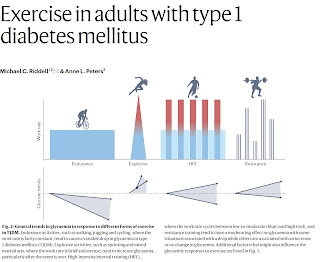Physical activity and Diabetes is Science!
Welcome or Welcome Back to my adventures!
This time I will bring you in my training details with Sport and Diabetes!
If you do not know me a little intro:
I’m Eleonora, born in 1995 in the beautiful city of Turin, Italy. With a background in molecular biotechnology and a master’s in oncology from Vrije University of Amsterdam, I’ve dedicated my life to understanding and improving human wellbeing. I work as a consultant engineer in Pharma Amsterdam and I channel my passion for sports as a Swim Director for the Amsterdam Triathlon and Cycling Club. Living with type 1 diabetes since 1999, when I was three, and you know what, I've embraced it as a unique strength that fuels my dedication to triathlons and my quest for optimal health! My journey has led me to become a certified nutritionist and life coach, always striving to inspire and support others in their diabetes management and overall health journey.
My Mission
Diabetes is a full-time challenge, but with the right mindset and lifestyle, it can be managed effectively. My mission is to provide genuine insights and practical guidance to those living with diabetes, enhancing understanding and promoting a healthy lifestyle. By sharing my personal experiences, strategies, and the tools I've developed, I aim to inspire others to take control of their health. Combining cognitive behavioral therapies with medical treatments, my goal is to shift the focus from just insulin and glucose levels to a comprehensive approach that includes nutrition, exercise, and mental wellbeing. Together, we can create a supportive community where everyone can thrive despite the challenges of diabetes.
The impact on blood glucose from physical activity,
can vary widely among individuals based on factors such as fitness level, insulin sensitivity, diet, with and without the presence of diabetes. Myself, triathlete with Diabetes type 1 since 1999, started my own analysis in 2022 to understand the blood sugar fluctuation during different type of exercises, with different duration and intensity. You will read below, a breakdown from scientific articles of how various training zones typically influence blood glucose:
- Low-Intensity Zone (Zone 1)
Intensity: 50-60% of maximum heart rate
Activities: Light walking, easy cycling, easy running, easy swimming
Effects on Blood Glucose:
Stabilization or Slight Decrease: Low-intensity exercise primarily uses fat as fuel and has minimal impact on blood glucose levels. It can help improve insulin sensitivity over time.
Long-Term Benefits: Regular low-intensity exercise can enhance insulin sensitivity and improve overall blood glucose control.
- Moderate-Intensity Zone (Zone 2)
Intensity: 60-70% of maximum heart rate
Activities: Easy running, moderate cycling
Effects on Blood Glucose:
Gradual Decrease: Moderate-intensity exercise uses both glucose and fat for fuel, leading to a moderate reduction in blood glucose levels during and after the workout.
Improved Insulin Sensitivity: Regular moderate-intensity workouts can significantly enhance insulin sensitivity and glucose uptake by muscles.
- High-Intensity Zone (Zone 3)
Intensity: 70-80% of maximum heart rate
Activities: Tempo Running, vigorous cycling, moderate swimming
Effects on Blood Glucose:
Immediate Decrease: High-intensity exercise rapidly utilizes glucose for energy, leading to a more significant decrease in blood glucose levels.
Post-Exercise Drop: Blood glucose levels can continue to decrease post-exercise due to increased insulin sensitivity and glucose uptake by muscles.
- Very High-Intensity Zone (Zone 4)
Intensity: 80-90% of maximum heart rate
Activities: Sprinting, high-intensity interval training (HIIT), activity in threshold pace.
Effects on Blood Glucose:
Initial Increase Followed by Decrease: Very high-intensity exercise can cause a temporary spike in blood glucose due to the release of stress hormones like adrenaline and cortisol, which promote glucose release from the liver. This is often followed by a significant drop in blood glucose levels as muscles consume the glucose.
Enhanced Insulin Sensitivity: Over time, regular high-intensity training can improve insulin sensitivity and glucose metabolism.
- Maximal Effort Zone (Zone 5)
Intensity: 90-100% of maximum heart rate
Activities: Maximum effort sprints, intense anaerobic workouts
Effects on Blood Glucose:
Sharp Increase and Then Decrease: Similar to Zone 4, maximal effort workouts can cause an immediate spike in blood glucose due to stress hormone release. However, the subsequent decrease can be more pronounced as the body works to replenish energy stores.
Insulin Sensitivity: Maximal effort workouts can greatly enhance insulin sensitivity and overall glucose control with consistent training.
----------------------------------------------------------------------------------------------------------------------------
- My Personal Discovery
By understanding how different training zones affected my blood glucose, I could tailor my exercise routines to optimize my health and manage my blood sugar levels more effectively.
During the triathlon preparation in 2023 I was followed by a triathlon coach, Jose Lonzano. Jose is a passionate, knowledgeable trainer and he informed himself about diabetes while following myself in training.
During our trainings we had to keep into account my blood sugar fluctuating, and how to adjust my nutrition based on what was going to be the training like. This was a very interesting process to do together as for the first time I stopped and reflected on my own strategy. Strategy is a simple word with a complex meaning and content. Training strategy, nutrition strategy and also insulin strategy.
Triathlon is an heavy sport, composed of three disciplines: Swim, Bike, Run. Another two things are included in triathlon, strength training and streaching. All of these activities will take a good amount of time physically and mentally for someone without diabetes. If the diabetes is involved, things are getting much more complicated on the nutrition part and not only.
Every athlete would like to know exactly how much integration is needed during long runs or bike rides in order to master the nutrition to keep the performance increasing, avoiding low sugar drops or glucose spikes.
Each of us is different, and sometimes we define our physical activity with words that have no meaning by itself; "the run/bike ride was long and intense", what does this mean? Long and Intense are two paraments that have no meaning without a precise definition and data behind it.
----------------------------------------------------------------------------------------------------------------------------
Defining the intensity and length of a run, bike ride, or swim involves understanding various factors that affect the overall effort and impact of the activity on the individual. Here are the key components to consider:
1. Length
The length of the activity is generally measured in terms of distance or duration:
Run/Bike Ride: Typically measured in kilometers or miles for distance, and in minutes or hours for duration.
Swim: Usually measured in meters or yards for distance, and in minutes or hours for duration.
2. Intensity
The intensity of an activity can be assessed through several metrics:
Perceived Effort
Rate of Perceived Exertion (RPE):A subjective measure where individuals rate their effort on a scale (e.g., 1-10 or 6-20). Higher numbers indicate greater effort.
Heart Rate
Heart Rate Zones: Training zones based on percentages of maximum heart rate (MHR). Common zones include:
- Zone 1: 50-60% MHR (Very Light)
- Zone 2: 60-70% MHR (Light)
- Zone 3: 70-80% MHR (Moderate)
- Zone 4: 80-90% MHR (Hard)
- Zone 5: 90-100% MHR (Maximum)
Speed/Pace
Running Pace: Time per kilometer or mile.
Cycling Speed: Average speed in kilometers or miles per hour.
Swimming Pace: Time per 100 meters or yards.
Power (Cycling)
Power Output: Measured in watts, often using a power meter. Provides a precise measure of effort.
Lactate Threshold
Lactate Threshold: The exercise intensity at which lactate begins to accumulate in the blood. Often used to set training zones.
3. Training Intensity Relative to Individual Fitness
To define how intense training is for a person, it's important to consider individual fitness levels and goals:
Baseline Fitness
VO2 Max: Maximum oxygen uptake, a key indicator of aerobic fitness.
Functional Threshold Power (FTP) for Cyclists: The highest power a rider can sustain for an hour.
Personalized Training Zones
Custom Heart Rate Zones: Based on individual maximum and resting heart rates.
Pace/Speed Goals: Tailored to personal bests and fitness improvements.
---------------------------------------------------------------------------------------------------------------------------
- My Personal Conclusion
We identified different training zone for myself
- First of all, my max Heart Rate was established with the following equation
MAX HR=220-Age=190 bpm
REST HR= 50 bpm
Zone 1= 0-106 bpm
Zone 2=106-140 bpm
Zone 3=150-157 bpm
Zone 4=157-175 bpm
Zone 5>175 bpm
For every heart rate Zone I started my personal analysis. I was tired of training and facing low glucose episodes in the middle of the workout. I was tired of eating and it reveals to bee too much so I have to deal with hyperglycemia during or after.
Training schedule has variety!
For myself as a triathlete, it is fundamental for me to understand how my body reacts to different exercises. My training schedule is not only composed of cardio and endurance but also by explosive intervals and strength training.
In general, endurance exercise activities reduce glycaemia, and explosive activities raise glycaemia, while high-intensity interval training and resistance training activities can have a moderating effect.
Not always physical activity means the glucose is going to drop infact also in my personal experience, I notice an increase in glycemia in Strength and cardio exercise in the threshold.
What do you do? Cit Nature 2023 below
Increases in insulin delivery after explosive exercise, resistance exercise and/or high-intensity interval training might be required if hyperglycemia develops; however, the risk of post-exercise hypoglycemia is heightened in the 12–24 h after exercise so frequent glucose monitoring is required.
How do we behave then?
I found my strategies to act and react in case of different kinds of exercises coming my way.
FYI
https://www.nature.com/articles/s41574-022-00756-6
Train Smarter
Zone 1= 0-106 bpm-Zone 2=106-140 bpm
Exercising in lower heart rate zone (Z1-Z2) identifying the FAT MAX zone, has the effect to maximize the fat oxidation during exercise. Therefore, training in FAT MAX zone brings metabolic and cardiovascular heart benefit in diabetic patients. Activating the fat metabolism help control weight and reduce the glucose dependence as main source of energy, minimizing hypoglycemia and hyperglycemia during exercises. This create a more stable glucose management, helping to reduce insulin and decrease sense of hunger after high intensity exercises.
From the scientific article “Maximal Fat Oxidation during aerobic exercises for adolescents with DT1” I changed our perspective and way of working towards a new parameter; FAT OXIDATION. The goal is to train using fat and avoid to burn fast the glucose resources in the blood. The graph below shows a 1h run from 10.30 to 11.30 where I did not see a violet decrease of blood sugar. The target heart rate was 120 bpm. For the bike, the test showed a power of 80 to 100W and heart rate below 130 bpm.
Zone 3=150-157 bpm
Exercising in a higher heart rate zone (Z3) identifying the effect that this has on the blood sugar was a key process form my training. As expected training in this heart rate zone caused a decrease in my blood sugar.
Although my question is how fast does it decrease and how much? Therefore I started calculating and analysis my own data for months and I had manage to arrive to conclusion!
Zone 4 and Zone 5
As expected the glucose levels rises in the training in condition of Zone 4/5.
All the graphs of my blood sugar and training is on the GlucoFit Instagram page in the stories :)
To know more about my challenges and my day to day diabetes management on Instagram
- glucofit360
- elecampagnoli
- Eleonora Campanoli on Strava
- BLOG
- Contact: campagnolieleonora95@gmail.com


.png)
Comments
Post a Comment